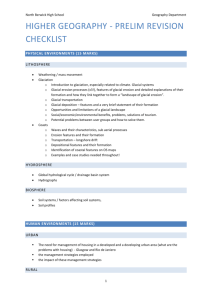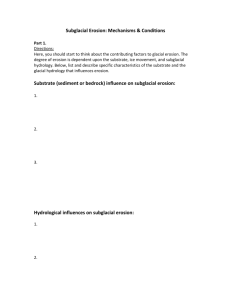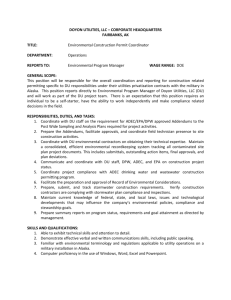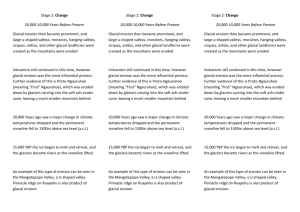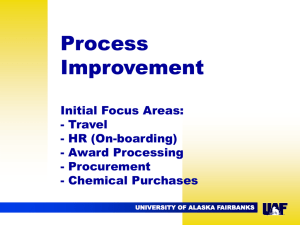Final
advertisement
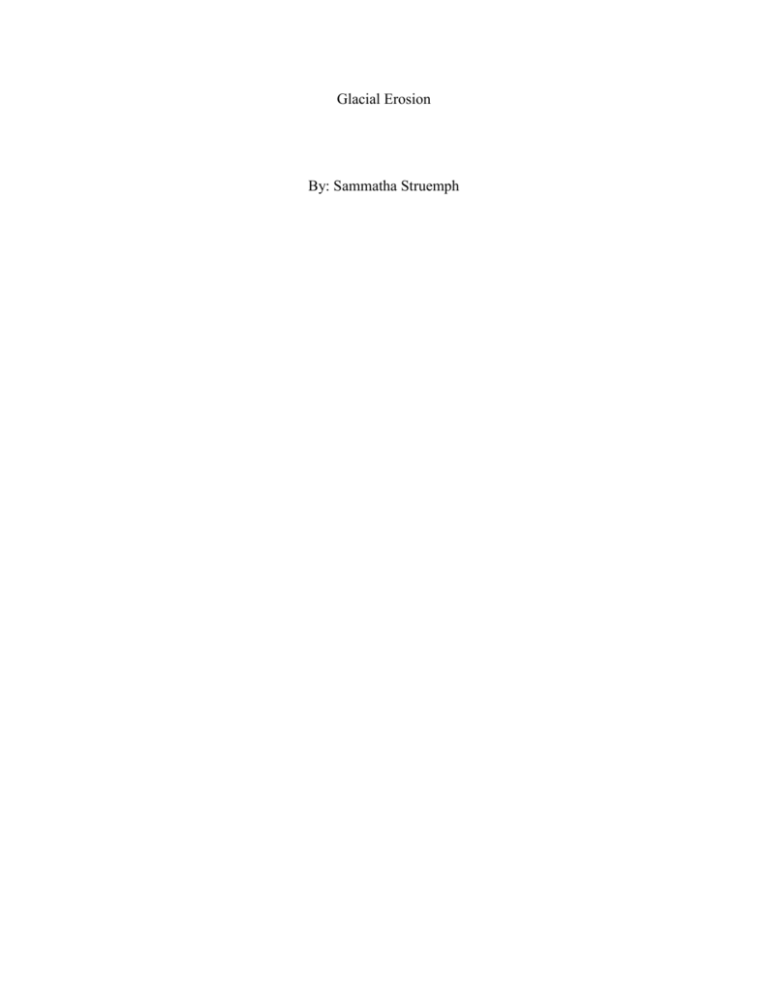
Glacial Erosion By: Sammatha Struemph Works Cited Bennett, Matthew, and Neil F. Glasser. Glacial geology: ice sheets and landforms. Chichester: Wiley, 1996. Print. Includes bibliographical references and graphs. Brocklehurst, SImon. "Tectonics and geomorphology.." Progress in Physical Geography 34.3 (2010): 357-383. Print. Author affiliated with University of Manchester, UK Davis, T. Neil. "Glacial Erosion, Alaska Science." Geophysical Institute of the University of Alaska, Fairbanks. Version 416. Geophysical Institute, 4 Aug. 1980. Web. 26 Mar. 2011. <http://www2.gi.alaska.edu/ScienceForum/ASF4/416.html>. This article is provided as a public service by the Geophysical Institute, University of Alaska Fairbanks, in cooperation with the UAF research community. T. Neil Davis is a seismologist with the Institute. Embleton, Clifford. Glaciers and glacial erosion . London: Macmillan, 1972. Print. A bibliography is available. This book is part of the Geographical readings series. Etienne, James, Micheal Hambry, Jeremy Davies, Richard Waters, and Philip Wilby. "lacial meltwater erosion and sedimentation as evidence for multiple glaciations in west Wales.." Boreas 33.3 (2004): 14. Print. Author affiliated with Centre for Glaciology, Institute of Geography and Earth Sciences, University of Wales, Aberystwyth, Ceredigion SY23 3DB, Wales, UK andBritish Geological Survey, Kingsley Dunham Centre, Keyworth, Nottingham NGJ2 5GG, England, UK Mooers, Howard , and Philip Larson. "Generation of a heavy-mineral glacial indicator dispersal train from a diabase sill, Nipigon region, northwestern Ontario." Canadian Journal of Earth Sciences 42.9 (2005): 1601-1613. Print. Author affiliated with Department of Geological Sciences, University of Minnesota, Duluth, MN 55812, USA Stille, Darlene R.. Erosion: how land forms, how it changes. Minneapolis, Minn.: Compass point books, 2005. Print. Includes bibliographical references in the index. Walker, B. H., and W. L. Steffen. Global change and terrestrial ecosystems . Cambridge: Cambridge University Press, 1996. Print. References and bibliography are included in the index. Web Site Evaluation Worksheet Topic: 1. Glacial Erosion Assess the source: What is the source? X Scholarly General Internet Address (URL): http://www2.gi.alaska.edu/ScienceForum/ASF4/416. html Name of institution: Geophysical Institute, University of Alaska Fairbanks Commercial x Educational Network Government Military Other: Non-profit organization Commercial Internet provider Is there a date of original publication or last revision? x YES NO If yes, write it here: August 4, 1980 With the above date or lack of it, does the source still have relevance? x 2. YES NO Assess the author/producer: Author: T. Neil Davis If the site appears to be a commercial Internet provider, does the author appear to have any affiliation with a larger institution? x YES NO Can’t tell If you answered yes, briefly describe: Geophysical Institute, University of Alaska Fairbanks Does the author's affiliation with this particular institution appear to bias the information? YES x NO Can’t tell Is the author the original creator of the information? x YES NO Can’t tell Does the author list his or her: Occupation? YES x Years of experience? YES x NO Position? YES x NO Education? YES x NO Other credentials? YES x NO If you answered no to any of these questions, can you find a link on the page to provide answers to these questions? YES x NO With the above information or lack of it, do you feel this person is qualified to write on the given topic? x YES NO If yes why? The information is supported by a major institute. 3. Assess the content: Describe the intended audience: Anyone with the desire to learn about erosion. What is the purpose of this information? x Inform Explain Persuade What is the primary thesis? Glaciers are continually moving. Was the information reviewed before it was “published”? YES NO x Can’t tell Can you distinguish between facts and opinions? x YES NO Can’t tell Are there any accompanying pieces to provide additional information such as a bibliography? YES x NO 4. Assess the relationship between this source and others you have found: Does this source provide new information? YES x NO Can’t tell Does this source verify/corroborate information in other sources? x 5. YES NO Can’t tell Assess support for your original ideas: Does this work move my argument forward? x YES NO Can’t tell NO Can’t tell Is this a credible source? x YES Do I have to justify its use? YES NO x Can’t tell 6. Overall Conclusions: Given all the information you determined from above, is this piece of information appropriate for your topic? x YES NO If yes, explain your decision and any reservations you would tell someone else using this information. This page gives basic information on erosion. It would be a good place to start building your research.

